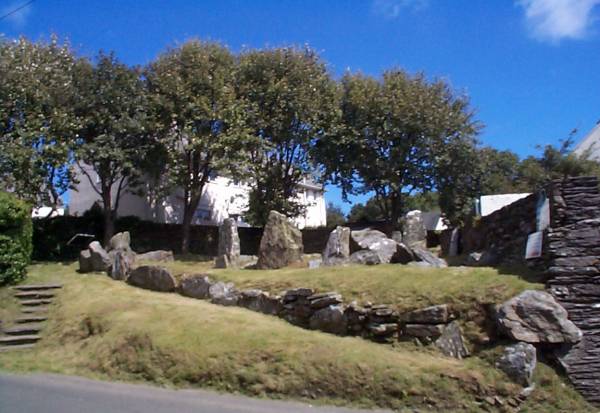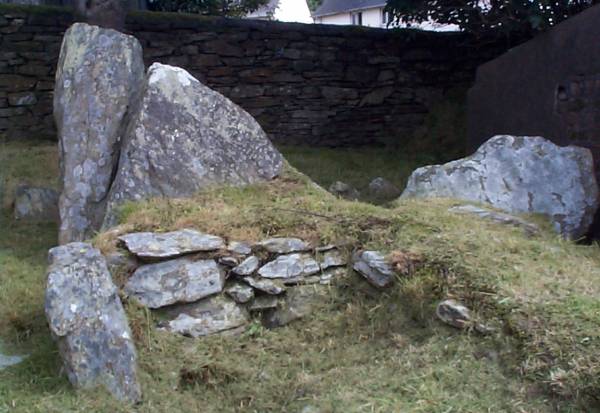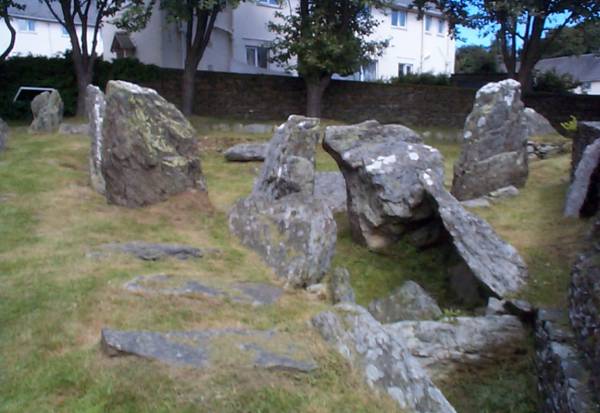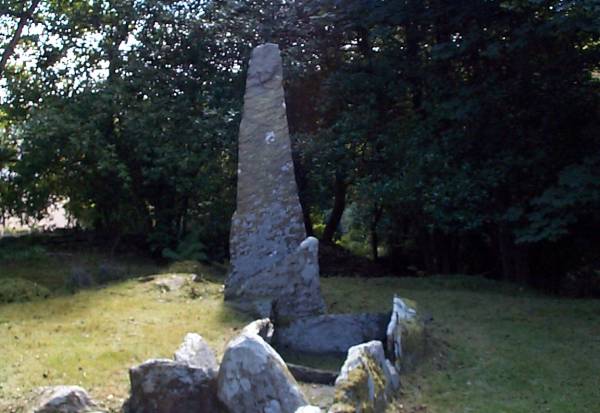
The largest known megalithic tomb on the island lies in the garden of a private cottage. The Cairn (a conical heap of stones built as a monument or a landmark) grave is made of coloured sandstone with a forecourt of 12 metres across and 4 metres deep. It contains three chambers once filled with burials. When excavated only one burial and bowl survived.

King Orry's Grave, as it is commonly known, tells something of the residents who lived on the Isle of Man during the Neolithic times over 4000 years ago. The site was built by farmers as a memorial to their ancestors. Ceremonies held on the site left traces of hearth and flint

King Orry was King Godred of Crovan a well known Manx legend. He took control of the Isle of Man and many of the islands between it and Norway, in 1079. To honour him, many monuments were named after him, but there is no connection between this historical figure and these prehistoric remains.

In 1953 the eastern part of the site was subject to an archaeologically dig and investigation. The western site reminded hidden by the garden of a private cottage till the Manx National Heritage acquired the listed monument. It is believe from records over 200 years old that the two sites were once connected, but with the building of roads and houses this is difficult to prove. The complete site now has public paths, maintained landscape, and information signs.

|